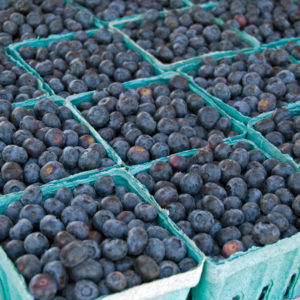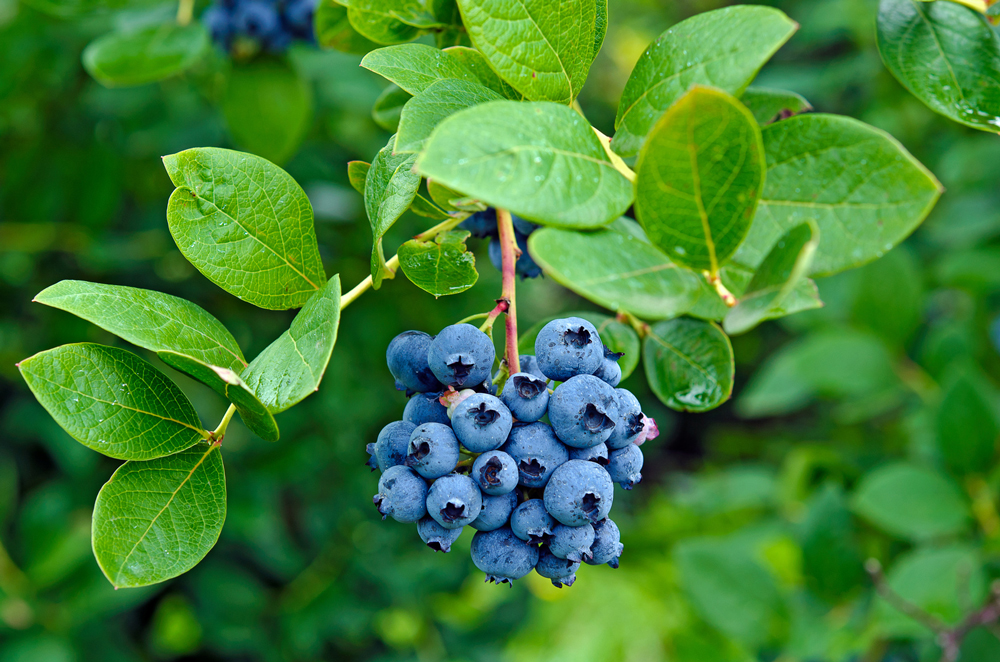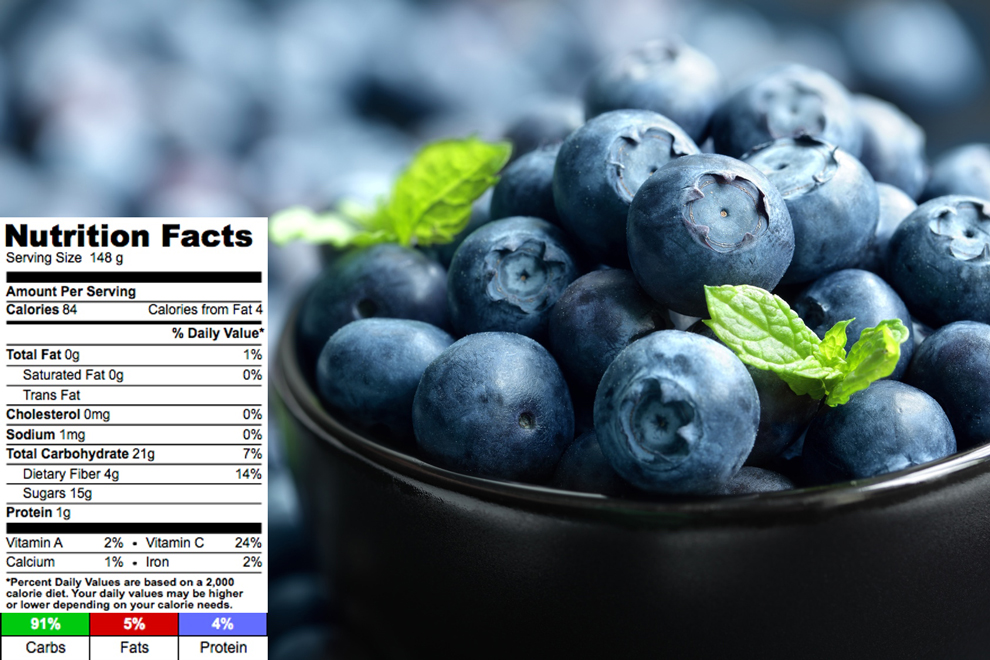
148 grams of blueberries is 84 calories.
91% Carbs, 5% Fat, 4% protein
Treat food as you would your body, remembering that in time food will be your body.”
No, we don’t turn blue from eating blueberries, but blueberries do
provide a wondrous scope of nutrients necessary for the construction and maintenance of our bodies.

Blueberries belong to a family of woody shrubs known as Ericaceae. This large family grows naturally in acidic soils and can be found throughout the world. Other members of the Ericaceae family include azaleas and rhododendrons. Within this family, blueberries belong to the genus Vaccinium. Other familiar berries in this genus include the bilberry, cranberry and ligonberry. Some less familiar berries are the sparkleberry, farkleberry, whortleberry and partridgeberry! Within this group, blueberries are certainly the most popular. There are three common varietal groups
of blueberries: lowbush, highbush and rabbiteye
The blueberry is an indigenous North American species with a deeply rooted history. By the time the Europeans arrived, Native inhabitants were already enjoying blueberries year round through clever preservation techniques.
Native Americans revered blueberries and much folklore developed around them. The blossom end of each berry, the calyx, forms the shape of a perfect five-pointed star; the elders of the tribe would tell of how the Great Spirit sent “star berries” to relieve the children’s hunger during a famine.
Ingredients:
blueberries
celery
Equipment:
Blender
bowl for serving
Directions:
Blend celery with 1/3 of blueberries. Pour dressing on top of remaining blueberries and serve as is.
A favorite dish of the Native American was Sautauthig (pronounced sawi–taw–teeg), a simple pudding made with blueberries, cracked corn (or samp) and water. Later, the European invaders added milk, butter and sugar when they were available.
Efforts in the early 1900’s by Dr. Frederick Coville and Elizabeth White of Whitesbog, New Jersey, to domesticate the wild highbush blueberry resulted in today’s cultivated blueberry industry. They identified plants with desirable properties growing wild in the forests of the Northeast and from these samples, selected several cuts and began crossbreeding the bushes, created new varieties. In 1916, Whitesbog produced the first commercial crop of blueberries. Coville and White’s initial breeding work and ongoing research by plant breeders have resulted in many juicy, sweet and easy to pick cultivars that can be grown today in a variety of climates.
Delicious fresh blueberries are a summertime treat and tradition in North America. You may now notice fresh blueberries on the shelves year round as well thanks to production in the Southern Hemisphere. About 50 percent of all blueberries produced are dedicated to the fresh market. The harvest starts in Florida in the Early Spring and Ends in British Columbia Canada in October and sometimes later. In fact, did you know that the North American Industry ships more than 100 metric tons of fresh blueberries each year to Iceland, and more than 500 metric tons to Japan?








